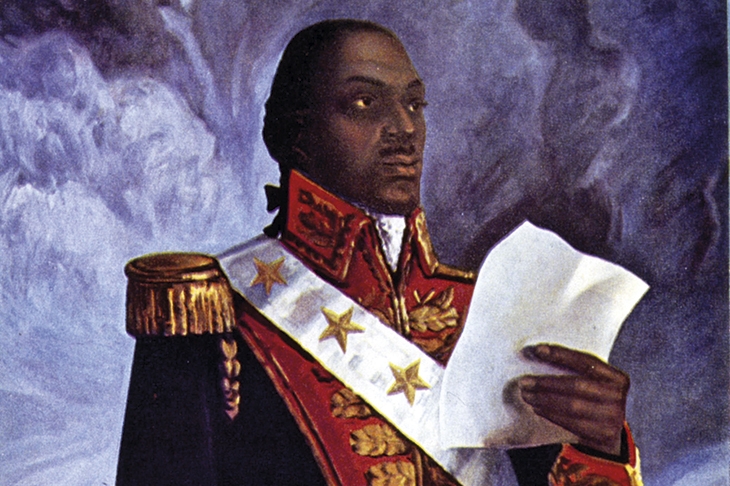No one can accuse Linda Colley of shying away from big subjects. This one is as big as they come — nothing less than an exploration of the origin of written constitutions. It is built around two ideas. One is that the development of national constitutions has to be studied globally, not nationally. Only then can consistent patterns emerge. The other is that there is a consistent pattern. The great generator of written constitutions, she argues, is war. The argument is that war requires an exceptionally high degree of social organization which makes a formal constitution desirable, perhaps even necessary.
The Gun, the Ship and the Pen is a remarkable feat of scholarship on an international scale. Its reach is not quite global. It is essentially based on the constitutional experience of Europe and of countries which have been settled by Europeans. Apart from sections touching on oddities such as Pitcairn and Hawaii, the one notable foray into a different tradition is a chapter (aptly called ‘Breakout’) on Japan. Even in Japan, however, the constitution of 1889 was a European import and the constitution of 1947 an American one.
This degree of international curiosity is unusual. British historians have traditionally been rather patronizing about the constitutions of other countries. Until recently, they regarded their own country as the world paradigm of constitutional excellence and others as benighted upstarts without our depth of experience and sophistication. The struggles of the Stuart kings with their parliaments and the emergence of the great 19th-century Reform Acts were once thought to be stories of universal relevance.
Oddly enough, this conceit was shared by many foreigners. American historians traced the basic ideas of American public life back to principles imported from England. French political scientists such as Alexis de Tocqueville and historians such as Élie Halévy looked to England as a haven of enlightened constitutional stability by comparison with their own rougher, conflict-laden model.
Yet ironically it is the United States, with its more formal and law-based approach, and France, with its combination of authoritarianism and constitutional instability, which have been the leading international models. Britain has constitutional rules, but they lack the two defining features of a modern written constitution. They are not codified in any document. And they are not what the US constitution calls the ‘supreme law of the land’, prevailing over every other source of law.
Unless you count the Athenian constitutions of Draco and Solon, the first written constitution worthy of the name was probably the Union of Utrecht of 1579, which marked the creation of a Netherlands state out of the provinces that had broken away from Habsburg Spain. Colley starts later, in the 18th century, with General Paoli’s short-lived Corsican constitution of 1755. There is a logic to this choice. It was the 18th-century Enlightenment that first conceived of the written constitution as an intellectual ideal, not just a pragmatic response to an immediate crisis such as the Union of Utrecht.
For the intellectuals of the 18th century, a written constitution was a way of remodeling society in accordance with an abstract ideal of humankind. The title of Jeremy Bentham’s pamphlet of 1823, Leading Principles of a Constitutional Code for Any State, says it all. The object of every constitution, he thought, was the creation of rights designed to achieve heaven on earth (‘subsistence, abundance, security and equality’). Because this was a universal aspiration, the same basic constitutional principles applied ‘for every territory, for every race and for every time’. Indifference to the variety of human experience has rarely been carried further.
This is what Edmund Burke, the arch opponent of written codes of rights, had against the constitutions of revolutionary France. They did not, like the original Constitution of the United States, simply distribute powers and functions among the organs of the state and limit the kind of laws that could be enacted. They sought to perfect human societies in ways which ignored the frailty, prejudices and habits of real people. Such projects commonly ended up coercing those who did not live up to the ideal. The natural product of the Declaration of the Rights of Man, thought Burke, was the guillotine.
In the long run, Burke failed and Tom Paine won. Some combination of American and French principles has inspired almost every written constitution in the world apart from those which are overtly designed to support a totalitarian state. In the 20th century, constitutional codes became all but universal. Today, Britain, New Zealand and Israel are the only significant states without one.
It is possible to admire Colley’s range, style and learning without necessarily accepting her argument that war is the great generator of written constitutions. Her starting point is clearly right. The ability to conduct major wars with all the resources of the nation-state was the raison d’être of European governments from the age of the first great conscript armies in the 17th century until social welfare took over as our chief collective activity in the middle of the 20th. This was also, as she points out, the age of written constitutions. But were the two things connected?
A simpler explanation might be that written constitutions are adopted upon the destruction of some previous constitutional order. War is simply one, admittedly fairly common, occasion for the destruction of a previous constitutional order.
We can test this by looking at the revolutionary and Napoleonic wars. The two major protagonists were Britain and France, which were at war throughout. Both countries mobilized their national resources on a scale unprecedented in their histories. France had a succession of written constitutions during these years. Britain had none. The difference was that France had destroyed its monarchy and went on to destroy its republic in favor of successive Napoleonic regimes, before pulling those down in their turn and restoring the monarchy. Britain conferred extensive new powers of its government, notably in the realms of public order and taxation. But its basic constitutional order underwent no significant change. If Napoleon had succeeded in conquering Britain, it might well have needed a written constitution. But that did not happen.
The same point can be made about most written constitutions. Almost without exception, they have been adopted after an old order has vanished for whatever reason. France has had 16 constitutions since 1791. Every one of them was adopted after a catastrophic defeat in war or a coup d’état. When France was defeated in war, as in 1815, 1870 and 1940, a new constitution was required, not in order to meet the demands of war but to fill the void left by the demise of the old order. Where a coup led to a new constitutional order, this could sometimes be related to the needs of war, as it was with the successive Napoleonic constitutions. Often it was not, as in the case of the royalist restoration of 1815, Louis Napoleon’s coup of 1852 and General de Gaulle’s quasi-coup of 1958. The destruction of an old order is the one common feature of all these occasions. In the 20th century, the commonest occasion for new constitutions was decolonization, generally peaceful.
The 1889 Meiji constitution of Japan, to which Colley devotes an interesting chapter, is the big outlier. It was occasioned by neither war nor the destruction of an old order, but simply by the desire of the emperor and the politicians to modernize the state. There are very few other cases like it. Constitutional change is disruptive. On the whole, if it ain’t broke, people don’t fix it.
For students of constitutions, the important point is one which Colley makes in one of the many insights in this impressive book. Written constitutions follow a very similar pattern. Many of them could be the constitution of just about any country. What differentiates them is not their terms but the way that they are operated. They depend on a shared political culture which is peculiarly national, a culture in which politicians of radically opposed views are united in their desire to make the constitution work. The world is full of countries whose constitutions are filled with laudable provisions but have been subverted entirely legally by determined authoritarian governments which did not care to make them work. Putin’s Russia and Trump’s America have that much in common.
This article was originally published in The Spectator’s UK magazine. Subscribe to the US edition here.


















